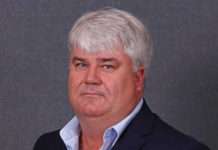Vesconite is pleased to be associated with one of the final-year Mechanical Engineering projects at the University of Kwazulu Natal, South Africa.
Vesconite-sponsored bushings were used for a traverse, a subassembly of the three-axis traverse and test stand. The traverse secures and positions aerodynamic probes in wind tunnels to measure parameters such as velocity and pressure around objects within the flow annulus. The traverse consists of a linear actuator that linearly extends the probe and a yaw subsystem that secures and rotates the probe about its tip.
In a letter of thanks to Vesconite Bearings Mechanical Engineer Tristen Wintershoven, who assisted with arranging the manufacturing, supply and delivery of the bushings, the study team noted that “six bushings were used to minimise friction for the linear actuator, where the bushings were situated between three stainless-steel rods and a 3D-printed carriage.”
“The bushings enabled effortless movement of the carriage even when carrying the weight of the yaw subsystem. Two bushings were used for the yaw subsystem between a 3D-printed gear housing and a rotating stainless steel shaft. The bushings provided a smooth rotation of the shaft. Additionally, one of the project’s aims was to design a lightweight traverse.”
The student team, consisting of J. C. Yellappen, K. Z. Khanilye, I. A. Pillay and supervised by Professor G. C. Snedden, noted that the Vesconite bushings are much lighter than metallic bushings or bearings and this assisted in the design of a lightweight traverse.
The bushings had an excellent fit, performed well, and did not require lubrication, they enthused.
“As an engineering company, we hope to empower young engineers with the tools to solve real-world challenges,” says Wintershoven of how he introduced the team to Vesconite’s online bearing design tool which helps with various bearing parameters, including determining clearances and deciding on whether an interference fit is necessary.
“We aim to better the way individuals undertake analytical thinking,” he says.












